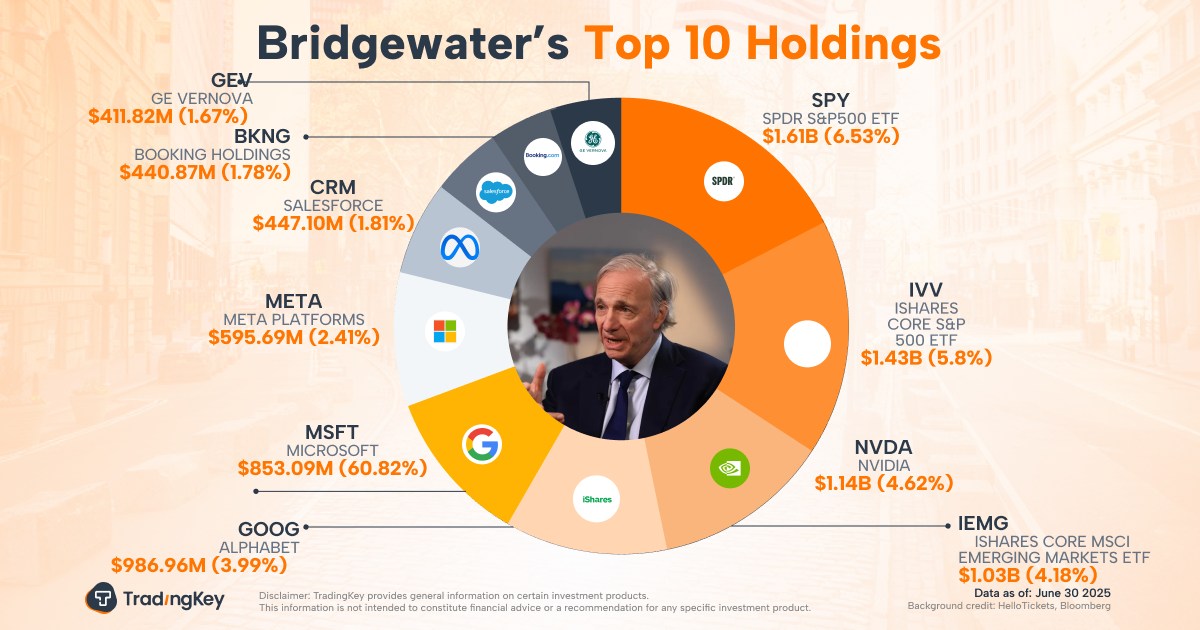Should You Forget XRP and Buy This Soaring Cryptocurrency Instead?

Key Points
So far this year, XRP has outperformed both Bitcoin and Ethereum.
Much of its strength is tied to perceived value following a series of favorable regulatory developments for its issuer, Ripple.
While these victories are positive for Ripple, they do not necessarily spell long-term upside for XRP itself.
While 2025 has been rather turbulent for the equity markets, one asset class has defied the panic-driven selling and gloomy macroeconomic outlooks: cryptocurrency.
As of Aug. 15, the "big three" -- Bitcoin, Ethereum (CRYPTO: ETH), and XRP (CRYPTO: XRP) -- have all outperformed the S&P 500 and Nasdaq Composite by a wide margin.
Where to invest $1,000 right now? Our analyst team just revealed what they believe are the 10 best stocks to buy right now. Continue »
Perhaps surprisingly, the smallest of the trio, XRP, leads the pack with a gain of 50% so far this year. Ethereum's return of 35% is impressive in its own right, yet momentum and headlines appear to be shifting toward new contenders like XRP.
Below, I'll outline three catalysts that could rekindle investor enthusiasm for Ethereum -- and potentially drive meaningful price appreciation as the digital asset narrative continues to unfold.
1. Don't sleep on stablecoins
XRP is best viewed as a niche-focused vehicle facilitating cross-border transactions. Ethereum, by contrast, underpins a broader ecosystem of decentralized finance (DeFi) protocols -- spanning trading, lending, smart contracts, non-fungible tokens (NFTs), and, notably, stablecoins.
Stablecoins are cryptocurrencies that are pegged to the value of fiat currencies, such as the U.S. dollar. Roughly 50% of stablecoin volume passes through Ethereum's blockchain -- underscoring the network's strong appeal for these emerging financial instruments. Major enterprises including Shopify, Visa, Walmart, PayPal, and Stripe already support or are consider supporting stablecoins as a form of payment.
This growing adoption could make stablecoins a key driver in Ethereum's evolution into a pillar supporting mainstream financial services. Meanwhile, XRP, while useful, lacks the same reach in commercial applications powered by digital assets.

Image source: Getty Images.
2. The impact of spot ETFs
One of the challenges of investing in cryptocurrency is the complexity of managing a digital wallet or using exchanges like Coinbase.
During the past year, however, the Securities and Exchange Commission has approved several spot Bitcoin exchange-traded funds (ETFs). These products give investors exposure to Bitcoin through trusted custodians such as BlackRock and Cathie Wood's Ark Invest, eliminating the need for the often time-consuming setup and stringent security protocols of buying and storing crypto directly.
The success of spot Bitcoin ETFs has unlocked a new wave of liquidity from both institutional and retail investors -- a dynamic that could be even more powerful for spot Ethereum ETFs.
Ethereum offers a unique combination of capital appreciation potential and income generation through staking to earn interest-like returns -- making these ETFs attractive to both growth investors and those seeking passive income.
3. The evolution of corporate and sovereign treasury strategy
In recent years, several corporations -- most notably Strategy (formerly MicroStrategy) and GameStop -- have added Bitcoin to their balance sheets, supplementing traditional liquidity assets such as cash and short-term investments. Likewise, a number of sovereign nations have begun exploring the idea of strategic Bitcoin reserves as part of their global treasury strategies.
Ethereum could follow a similar trajectory. With its income-generating staking rewards and potential for price appreciation as blockchain technology becomes further integrated into the global financial system, Ethereum stands out as a strong complement to Bitcoin holdings. For corporate chief financial officers and government treasury managers, incorporating Ethereum alongside Bitcoin could improve diversification while capturing the growth potential of DeFi.
Should you buy Ethereum instead of XRP?
Ethereum's role as infrastructure supporting DeFi and its accelerating blockchain adoption make it a more compelling opportunity than its narrowly focused peer XRP. That said, Ethereum still faces stiff competition from rival blockchains such as Solana, Cardano, and Tron.
Given these dynamics, I view Ethereum as offering a stronger balance of utility and upside potential than XRP but also as having ongoing volatility likely to remain in the short to medium term.
For this reason, I think that accumulating Ethereum at varying price points over a long time -- through a disciplined dollar-cost averaging approach -- is the most prudent investment strategy.
Should you invest $1,000 in Ethereum right now?
Before you buy stock in Ethereum, consider this:
The Motley Fool Stock Advisor analyst team just identified what they believe are the 10 best stocks for investors to buy now… and Ethereum wasn’t one of them. The 10 stocks that made the cut could produce monster returns in the coming years.
Consider when Netflix made this list on December 17, 2004... if you invested $1,000 at the time of our recommendation, you’d have $668,155!* Or when Nvidia made this list on April 15, 2005... if you invested $1,000 at the time of our recommendation, you’d have $1,106,071!*
Now, it’s worth noting Stock Advisor’s total average return is 1,070% — a market-crushing outperformance compared to 184% for the S&P 500. Don’t miss out on the latest top 10 list, available when you join Stock Advisor.
*Stock Advisor returns as of August 18, 2025
Adam Spatacco has no position in any of the stocks mentioned. The Motley Fool has positions in and recommends Bitcoin, Ethereum, Shopify, Solana, Visa, Walmart, and XRP. The Motley Fool recommends Coinbase Global. The Motley Fool has a disclosure policy.





